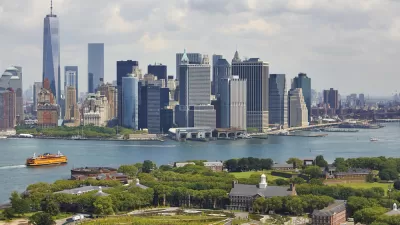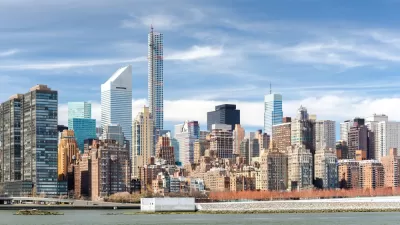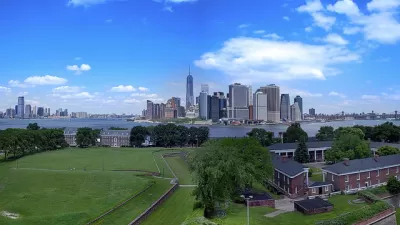Citing several recent projects, Alan G. Brake argues that New York City is developing an urban identity that no longer transmits every experience through the lens of Manhattan.

As Manhattan becomes, more than ever, a center for global capital, the rest of New York City is primed to develop along alternative paths. Alan G. Brake says this is a good thing, and centers his observations on one particular project. "The Hills on Governors Island, designed by the Dutch landscape architects West 8, have turned a previously pancake-flat stretch of land into a transformative platform for perceiving New York in a new way: a city that is rapidly evolving beyond a Manhattan-centric identity."
Visitors to The Hills enjoy panoramas of the city that cannot be had so freely in Manhattan itself. "Views like this are rarely available to average New Yorkers, and tourists are charged large sums for jaw-dropping views from the city's viewing platforms at One World Trade Center, the Empire State Building, and Top of the Rock at Rockefeller Center."
Brake makes the claim that "Mayor Bill de Blasio has not shown himself to be particularly interested or well-versed in planning and design, but he has slowly revealed a new understanding of the city as a regional entity connected by water."
To that end, the piece discusses de Blasio's Brooklyn Queens Connector (BQX) and five-borough ferry project as examples of the trend. "Both the BQX and the ferry expansion project give people more transportation choices, and acknowledge that the Manhattan-centric subway system is not enough to serve contemporary patterns of living and working, where many New Yorkers travel from one outer borough to another without ever coming into Manhattan."
FULL STORY: New York Is Rapidly Evolving Beyond a Manhattan-Centric Identity

Alabama: Trump Terminates Settlements for Black Communities Harmed By Raw Sewage
Trump deemed the landmark civil rights agreement “illegal DEI and environmental justice policy.”

Study: Maui’s Plan to Convert Vacation Rentals to Long-Term Housing Could Cause Nearly $1 Billion Economic Loss
The plan would reduce visitor accommodation by 25% resulting in 1,900 jobs lost.

Planetizen Federal Action Tracker
A weekly monitor of how Trump’s orders and actions are impacting planners and planning in America.

Wind Energy on the Rise Despite Federal Policy Reversal
The Trump administration is revoking federal support for renewable energy, but demand for new projects continues unabated.

Passengers Flock to Caltrain After Electrification
The new electric trains are running faster and more reliably, leading to strong ridership growth on the Bay Area rail system.

Texas Churches Rally Behind ‘Yes in God’s Back Yard’ Legislation
Religious leaders want the state to reduce zoning regulations to streamline leasing church-owned land to housing developers.
Urban Design for Planners 1: Software Tools
This six-course series explores essential urban design concepts using open source software and equips planners with the tools they need to participate fully in the urban design process.
Planning for Universal Design
Learn the tools for implementing Universal Design in planning regulations.
Caltrans
Smith Gee Studio
Institute for Housing and Urban Development Studies (IHS)
City of Grandview
Harvard GSD Executive Education
Toledo-Lucas County Plan Commissions
Salt Lake City
NYU Wagner Graduate School of Public Service





























